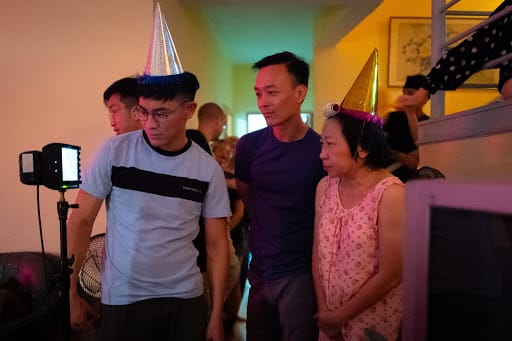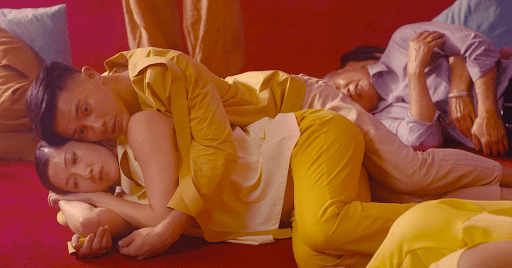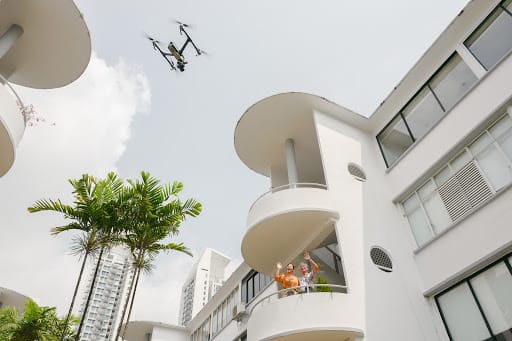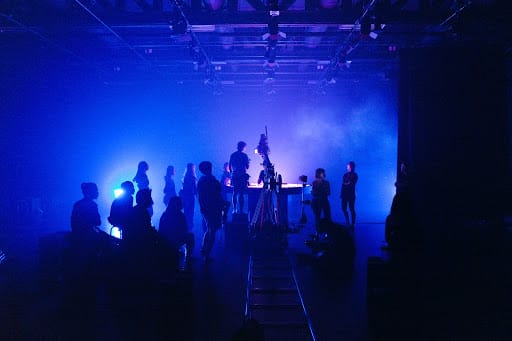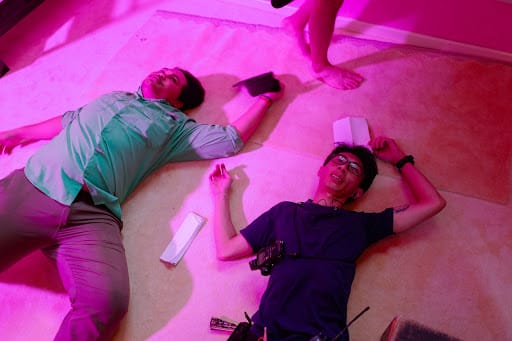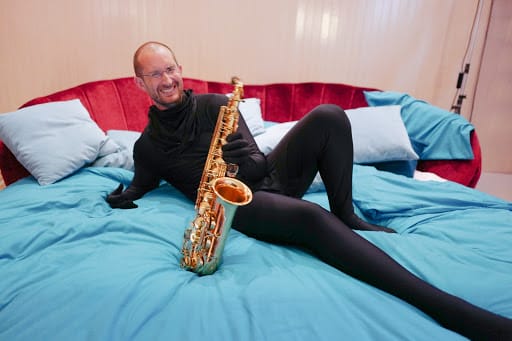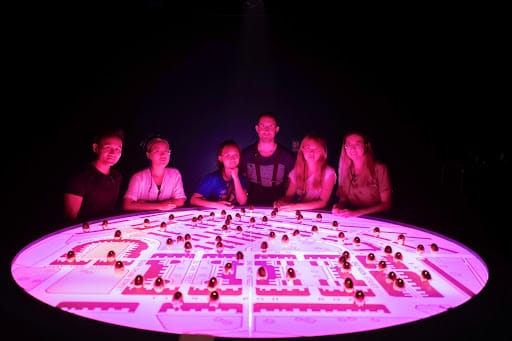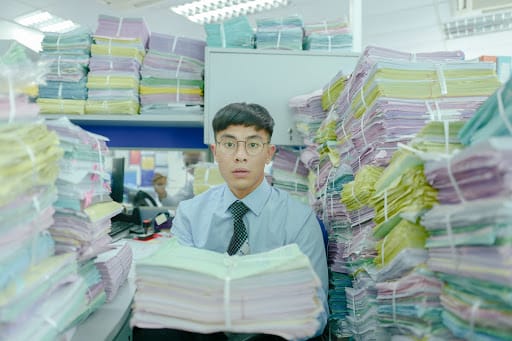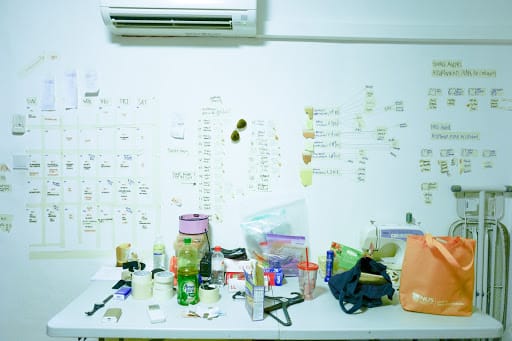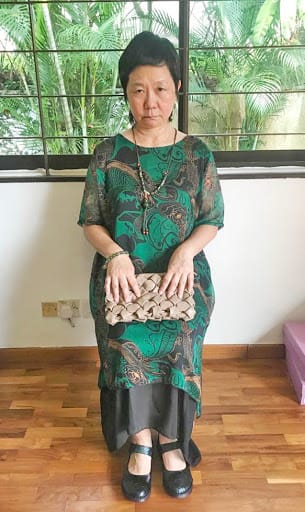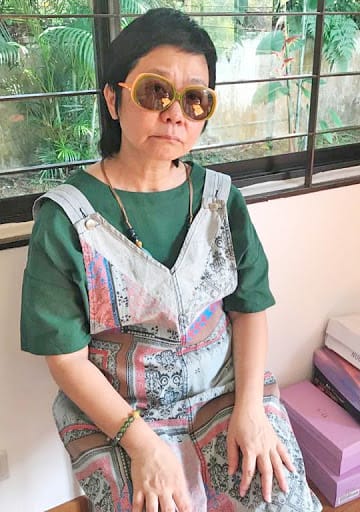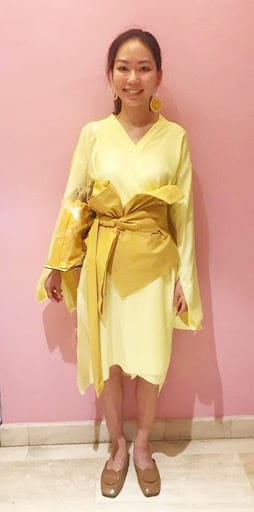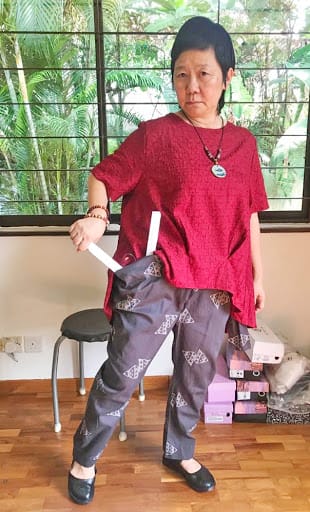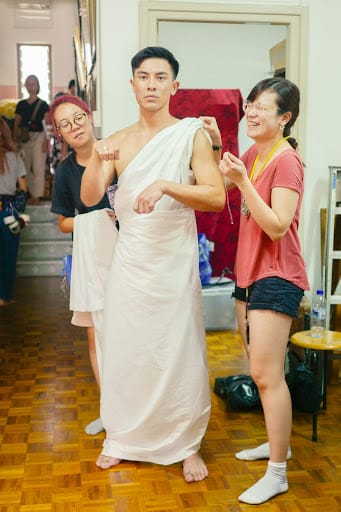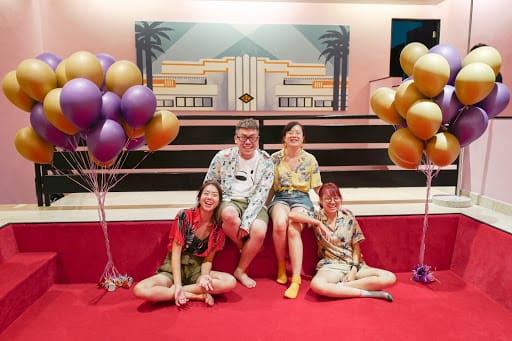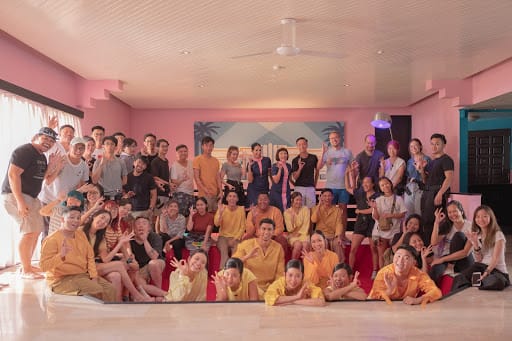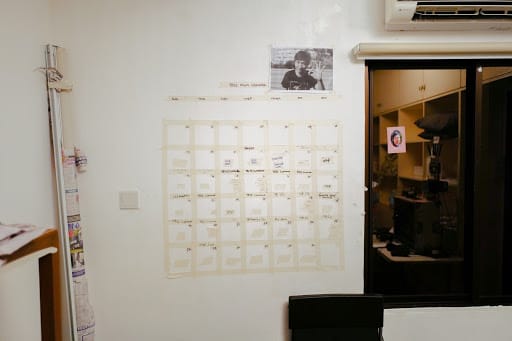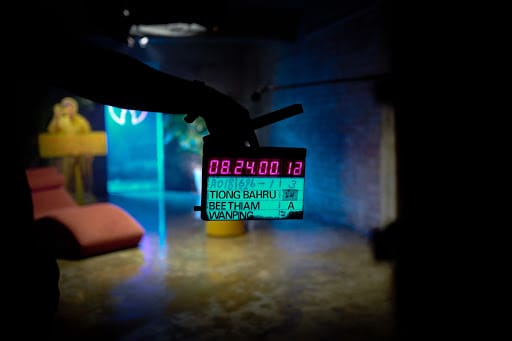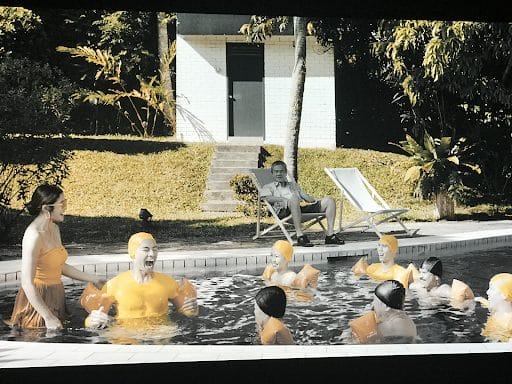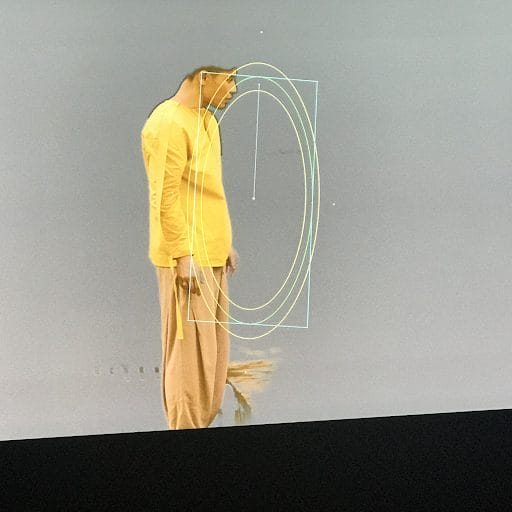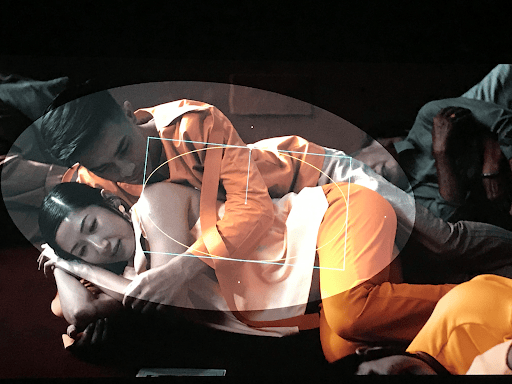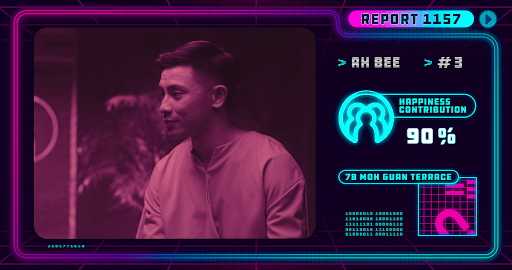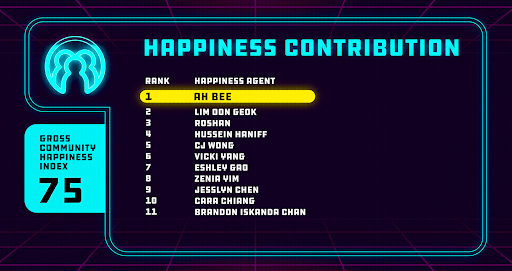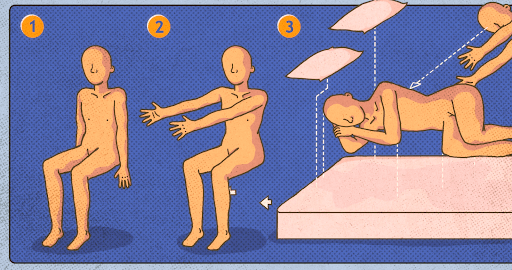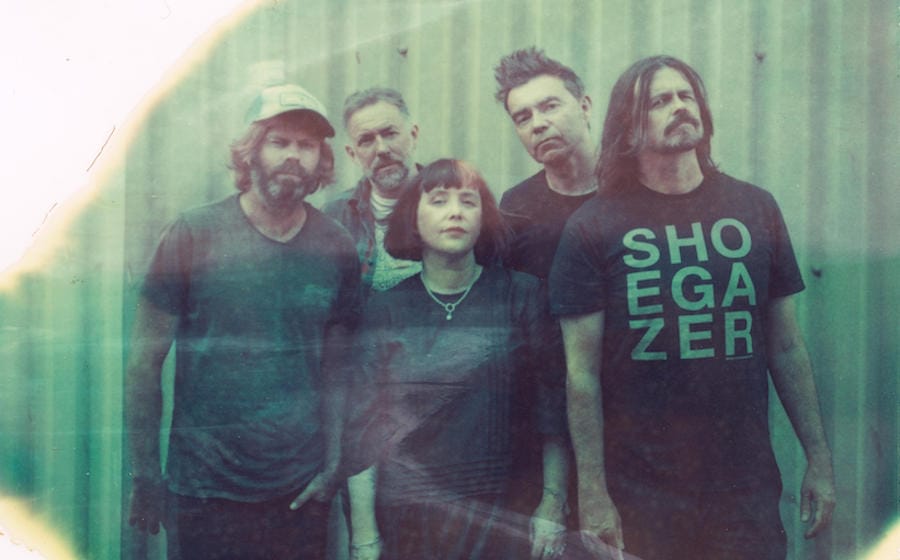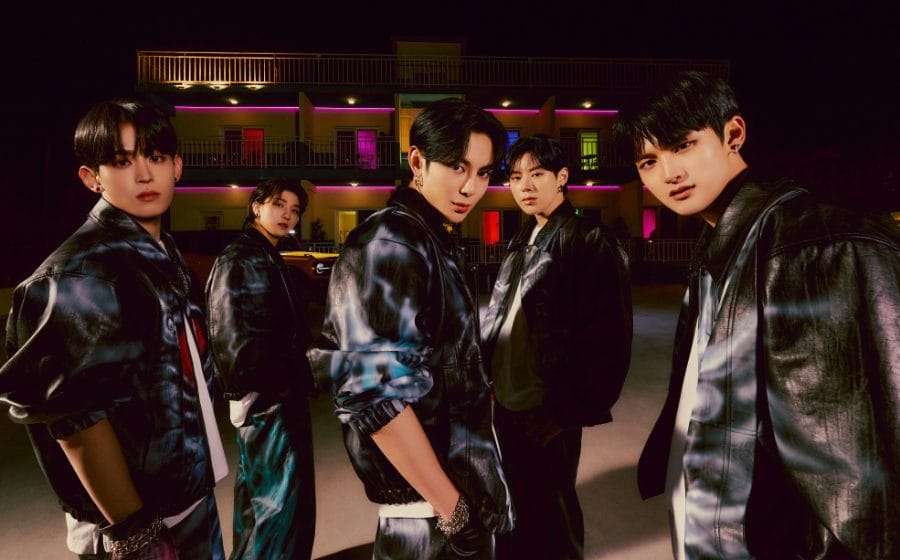
On paper, Tiong Bahru Social Club is Ah Bee’s (the protagonist, duh) journey in Tiong Bahru Social Club aka “a data-driven project to create the happiest neighbourhood in the world”. In film director Tan Bee Thiam’s words, it is a fantastical spin on a neighbourhood he is particularly enamoured with.
Here, Tan takes us through the filming process of Tiong Bahru Social Club.
—

I met my co-writer Antti Toivonen at the end of 2014 at the Singapore International Film Festival and our conversations led us to start working on a movie script. He comes from Finland, the happiest nation in the world. I am from Singapore, the most competitive nation in the world.
Over weekends and coffee, we would meet and discuss, research and talk to people with stories about Tiong Bahru. We also have sessions with other writers to polish up the script. The one idea that sticks is a corporation with an ambition to build the happiest neighbourhood in the world.
What if happiness can be concocted like chwee kueh and franchised so everyone can have a slice of Tiong Bahru happiness?
Thomas Pang plays Ah Bee and Goh Guat Kian plays his mother Mui. In the film, they live in a Pearl Bank apartment, where an en block sale is impending. I am blessed to work with some of our most talented and intelligent actors. Unlike most directors, I like to let my actors to see playbacks on set.
For me, it’s like letting your dancers perform in front of a mirror. It helps them get closer to where they want to be. It helps them to play with each other. And my actors always surprise me. Sometimes we would even write new lines on the spot. This element of play is important to give life to the characters.
The eyes and ears of the film are here. Seated on the floor is Looi Wan Ping, our director of photography and editor, also a very talented filmmaker in his own right. His feature documentary was in Berlinale this year! On his right is gaffer Jonathan Goh Qidi (head of lighting) and first camera assistant Jolina Ang (focus puller).
Carrying the boom mic with a dead cat wrapped around it is boom operator Susanne Soon (she can hold the boom for more than 10 minutes!) and in the background is sound mixer Justin Loh. The camera and lighting team are our workhorses: they come early to set up the equipment and they are usually the last to leave as they need to pack up and load the equipment back onto the truck.
For scenes where we need special equipment like tracks and jib-arm, we’ll have to rope in more people to help with the camera, lighting and grip department.
Cinematically, our reference is Ozu Yasujiro, a master of composition and colours. We want the camera to have a childlike wonder and naïveté. The geometry in composition and production design is to express the invisible power inside Tiong Bahru Social Club to put an order to everything. We lock most of our shots in wide static composition and stage it in planimetric for deadpan tension, paying homage to the comedies of Jacque Tati and Buster Keaton.
Our art team is led by James Page, who is also the body double of BRAVO60, the Artificial Intelligence friend of Ah Bee in the social club. BRAVO60 plays the saxophone to help create the mood for Ah Bee when he consummates with his new girlfriend on this couple bed.
Everything you see in the film is a result of their hard work: the stacks of paper in Ah Bee’s office, the map room, cuddle pit, the reception area with unique furnitures and lights, the logo with a door, the complaint centre, the cat paintings and ornaments in Ms Wee’s Tiong Bahru apartment, the fish painting and ornaments in Mui’s Pearl Bank apartment and more.
One of the inspirations for the aesthetics of Tiong Bahru Social Club is the architecture of Tiong Bahru (Art Deco) and Pearl Bank apartments (Brutalist). There is a sense of retrofuturism, the past imagining what it’ll be like in the future.
This is the costume room where each cast member is matched to specific costume and accessories, put together by our costume designer Melissa Chang and assistant costume designer Lionel Low. The young happiness agents wear yellow and their wardrobe includes work uniform (straps, belts and kimono inspired), swimwear, pyjamas and undergarments. The social club staff wear blue. The two “elderly” actresses Mui and Ms Wee have a range of quirky outfits that reflect their characters.
We had a lot of fun sourcing for the Happiness Rings that everyone wears, as well as other accessories such as floats, sunglasses, shoes, bags and more.
A film production becomes magical when everyone cares about the project, is given opportunity to contribute and we have fun together. This is a group picture after the laughter workshop scene. What does the okay sign mean in the film? 🙂
It took us a long time to secure a suitable house, for the main set of the social club. We were close to lock in a bungalow we really wanted but it was suddenly unavailable and one month before shoot, we were faced with the possibility that we might need to postpone the shoot. Luckily our lean production and location management team led by Goh Koon How found this bungalow along Bukit Timah and when we went in to recce, it fitted our requirements perfectly.
The team did a marvellous job with the locations.
This is the set of the Complaint Centre (CC), located at the World War II bunker at Tiong Bahru, located below P.S Cafe. Outside, our producer Huang Junxiang is getting our elderly extras to warm up for the complain scene. Inside, our art team is setting up the dusty bunker into a complaint centre that looks like a spa therapy.
The complain and cat chase scenes involve more than a hundred people and we have the assisting directing team coordinates the costume, hair makeup, casting and producing teams to help dress, direct and manage the crowd. It’s a great relief to see the smiles of the extras as we review the footages together. I don’t believe in the director dictating everyone on set.
Everyone is an equal and we should have fun together.
Once the picture is locked, we also start working on the visual effects, colour grading, music and sound design. We want to give Tiong Bahru a visual makeover and a fantastical spin. The image on the right is shot with a green screen at the gate of the Tiong Bahru Community Centre. During post-production, we changed the look of the gate and added depth to the buildings on the two sides.
Director of Photography Looi Wan Ping and I spent a week with colourist Peace Villow from The Posthouse to do colour grading. Through this process, we separated and tweaked the colours to serve the story more effectively.
In the universe of Tiong Bahru Social Club, there is no mobile phone, computer or car. We do not want to include any “modern technology” with a specific model that might suggest the year that the film is set in. Instead, we intentionally want a timelessness that is not set in the past or present or future. In Ah Bee’s home, there is a telephone and a television that’s at the verge of breaking down.
Instead, there are hardcopy instruction manuals to teach happiness agents how to cuddle and have sex. These manuals resemble airplane safety instructions cards. The only “technology” interface happens in the map room of the social club where the Madam and her staff monitor, rank and influence the behaviour of the community. They do so by manually moving the egg-shaped icons on a Tiong Bahru map using old-school bamboo sticks. This is mapped onto the Happiness Contribution and Personal Happiness Leaderboards that generate the Gross Community Happiness Index.
The animations, graphics and title cards are drawn and animated by Jerrold Chong and Lee Jiaying.
Catch Tiong Bahru Social Club by Tan Bee Thiam starting 10th December in cinemas. Photo credits Looi Wan Ping.
Alternatively, catch up with our November 2020 issue here!

